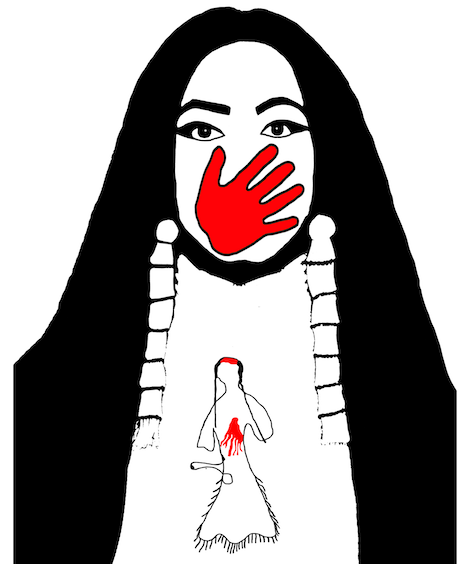Sheldon Raymore: Considering Two-Spiritedness
Performance Video and Discussion
Saturday, January 30, 2021, 3:30 pm
In conjunction with Native Feminisms
Sheldon Raymore’s (aka PrEPahHontoz) video performance underscores the systematic oppression that Two-Spirit people face today, and acknowledges significant customs of gender fluidity in Native cultures and the violence enacted upon historical Indigenous figures who did not conform to the colonialist gender binary. In the video, Raymore unpacks the imagery featured in his work Two-Spirit Tipi, explaining that the imagery therein derives from nineteenth-century Lakota depictions of Two-Spirits on winter counts (which are pictographic historical records typically produced on deer or buffalo hides); the feminine energy of Wi-Win (the moon spirit) and male energy of Wi (the sun spirit); the mouth-covering red handprint adopted by contemporary Indigenous peoples and their allies to draw attention to Missing and Murdered Indigenous Women (MMIW); and Raymore’s own Two-Spirit alter-ego, PrEPahHontoz. Raymore, himself born into the "Not for Sale Winter" of 1979, approaches the description of Two-Spirit Tipi as a Lakota storyteller, recounting histories and drawing connections to the lived Indigenous present and generational futures.
Sheldon Raymore (Cheyenne River Sioux Nation) uses his art practice to address contemporary and traditional Native American topics, approaching his subject matter with love, passion, and the honoring of his Indigeneity. Raymore is an interdisciplinary and activist artist, variously incorporating video, music, dance, poetry, costume design, regalia design, stage props, set design, and masks in the production of works that promote social change. His art alludes to triumphs and tribulations present throughout Lakota histories, including: intergenerational trauma, land loss and violation, tremendous spiritual responsibilities in being Two Spirit, and Lakota culture’s remarkable resilience and indestructible roots - roots that Raymore intentionally and meticulously preserves for the next seven generations to come.


